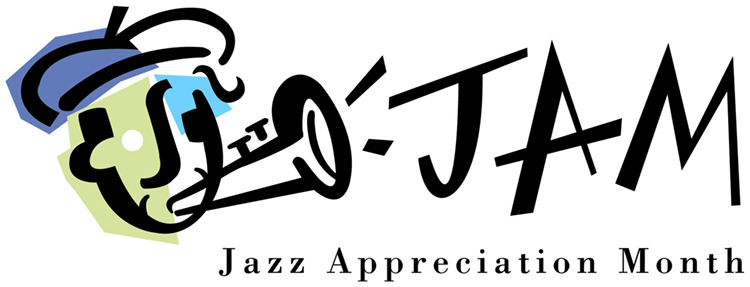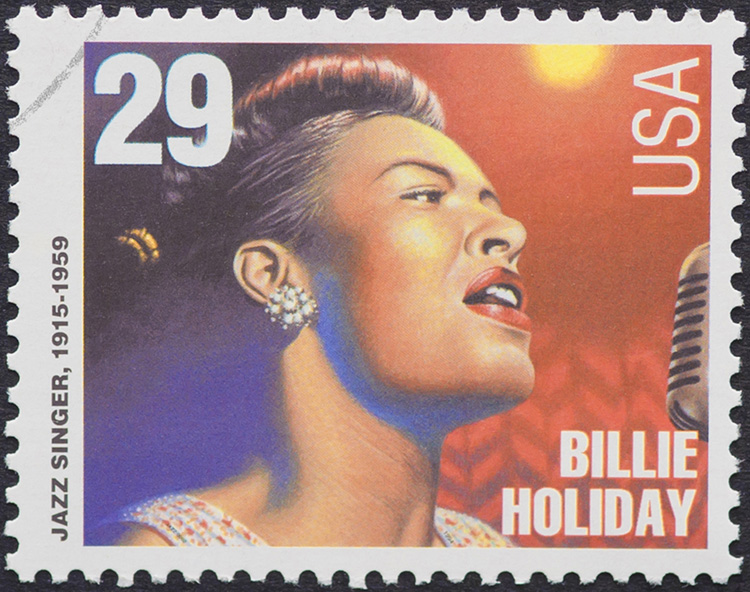Billie Holiday was a famous American jazz singer known for her expressive voice and her interpretations of popular songs. Holiday’s recordings from the early 1930’s to the 1950’s include many jazz classics. Credit: © AP Photo
April is Jazz Appreciation Month (JAM) in the United States. Jazz is a kind of music that is often considered the only art form truly native to the United States. The Smithsonian Institution’s National Museum of American History began JAM in 2002. JAM is meant to encourage people to participate in and study jazz, attend concerts, listen to jazz recordings, read books about jazz, and learn about the lives of famous jazz musicians. This year, World Book’s Behind the Headlines celebrates JAM by featuring prominent jazz musicians born in the month of April. We begin with Billie Holiday, one of the greatest singers in jazz history, who was born 102 years ago today, on April 7, 1915.
Holiday was admired for the bittersweet quality of her voice and for phrasing that had much in common with solos by great jazz musicians. Holiday’s distinctive voice transformed familiar popular songs, giving them an altogether different sound and interpretation.

JAM – Jazz Appreciation Month Credit: Smithsonian National Museum of American History
Holiday was born in Philadelphia, Pennsylvania, and grew up in Baltimore, Maryland, where her mother raised her in a poor black neighborhood. Holiday’s given name was Eleanora Fagan. Early in life, Holiday determined to become a vocalist. She began singing on stage when she was only 15. The record company executive John Hammond heard her and convinced the famous bandleader Benny Goodman to record with her.
Holiday made her first record in 1933 with Goodman. Her career took off two years later when she began a series of recordings with jazz pianist Teddy Wilson. With Wilson, Holiday recorded such classics as “God Bless the Child,” “They Can’t Take That Away From Me,” “Summertime,” “Easy Living,” “What a Little Moonlight Can Do,” “I’ll Get By,” and “Mean to Me.” Perhaps her most memorable and controversial recording was “Strange Fruit” (1939), a powerful portrait of the lynching of blacks in the American South.
Holiday’s greatest period extended from the 1936 to 1944. In addition to Teddy Wilson, she recorded with such major American jazz musicians as Count Basie, Roy Eldridge, and Lester Young. (It was Young who gave her the famous nickname, “Lady Day.”) Holiday performed regularly–often with white gardenias in her hair–in New York City and made numerous tours around the United States and Europe.
Holiday’s singing was often brilliant, but personal problems took their toll on her career and her life. Holiday began taking drugs as a teenager and the problem worsened as the years passed. She could not shake a heroin addiction, which led to her spending nearly a year in a federal reformatory. She also became involved in destructive love affairs and unhappy marriages. Holiday was just 44 when she died in New York City on July 17, 1959.

In 1994, the U.S. Postal Service honored Billie Holiday with this commemorative postage stamp. Credit: © Shutterstock
In 1995, the city of Baltimore erected a statue of Holiday at the corner of Lafayette and Pennsylvania avenues. The statue faces a monument marking the former site of the Royal Theatre where Holiday and numerous other jazz legends once played.
Untitled Document Can't view the linked articles? Subscribe to World Book Online

World Book Online delivers a progressive sequence of core databases supported by supplemental
tools, such as language translation, graphic organizers, and unique Webquests. Moving from
Early World of Learning to World Book Advanced, World Book Online aligns end-users with their
appropriate learning levels. Each stand-alone site provides additional features to support the
needs of users’ specific capabilities.
The World Book Difference
World Book combines cutting-edge technology with traditional editorial excellence to produce
authoritative, trustworthy, and unbiased content. The digital content is updated in real time and
carefully curated for each learning level. Accessible 24/7, the content is available on a variety of devices.
World Book Online combines 21st-century instructional techniques with timely information.
By breaking down complex topics and using easily understandable text, World Book Online helps to
build fluency and increase comprehension. Featuring single sign-on capability, these sites are paired
with highly visual content to engage even the most reluctant reader. Our collection of resources kindles
a lifelong learning experience for every user. This adherence to clarity, currency, and accuracy makes
World Book’s digital offerings an information hub for the classroom, library, and beyond.